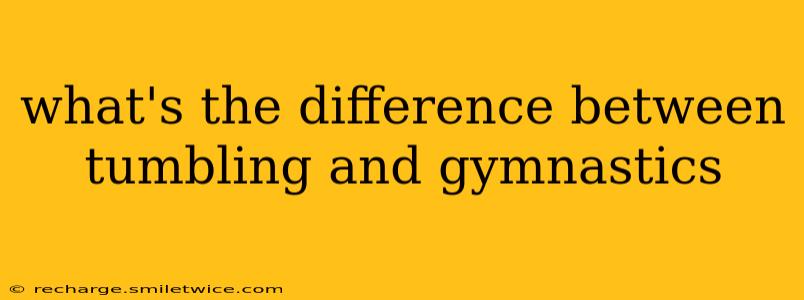What's the Difference Between Tumbling and Gymnastics?
While tumbling and gymnastics are closely related and often practiced together, they are distinct disciplines with key differences. Understanding these nuances helps appreciate the unique skills and challenges of each.
Gymnastics is a broad umbrella term encompassing a range of disciplines, including artistic gymnastics, rhythmic gymnastics, trampoline gymnastics, and acrobatic gymnastics. Artistic gymnastics, often what people picture when they hear "gymnastics," involves apparatus work (uneven bars, balance beam, floor exercise, vault) as well as compulsory tumbling passes integrated into the floor routine. Think of it as a multifaceted sport requiring strength, flexibility, coordination, and precision across diverse skill sets.
Tumbling, on the other hand, focuses specifically on the acrobatic skills performed on the ground, a subset of the overall gymnastics skillset. It's essentially the ground-based acrobatic elements – the forward rolls, back handsprings, back tucks, aerials, and other dynamic movements – that are often seen in floor routines but are performed as individual skills or linked sequences. While gymnasts do tumble, tumblers don't necessarily perform on all the apparatus.
Here's a breakdown to clarify the differences:
What are the main differences between tumbling and gymnastics?
The core difference lies in the scope and focus. Gymnastics is a comprehensive sport, while tumbling is a specialized skill set. Gymnastics incorporates a wider array of elements, including balance, strength, precision on apparatus, and choreography, while tumbling concentrates solely on the acrobatic skills performed on the ground.
Is tumbling a part of gymnastics?
Yes, tumbling is a significant component of many gymnastics disciplines, especially artistic gymnastics (floor exercise) and trampoline gymnastics. However, tumbling itself can also be a standalone activity, often practiced as a separate skill development program or even as a competitive sport in its own right.
What type of tumbling is used in gymnastics?
In gymnastics, tumblers utilize a variety of tumbling skills, ranging from basic forward and backward rolls to advanced aerial maneuvers like back handsprings, back tucks, full twists, and more complex combinations. The specific tumbling skills used depend on the gymnast's skill level and the demands of their routine. The difficulty and complexity of these tumbling passes are critical to scoring highly in a gymnastics floor routine.
How is tumbling different from cheerleading tumbling?
While both involve tumbling skills, cheerleading tumbling often integrates stunts and pyramids, and emphasizes teamwork and synchronized movements. Gymnastics tumbling, conversely, usually focuses on individual performance and the execution of intricate, high-scoring acrobatic skills. The levels of difficulty and the focus on precise technique also differ significantly. Gymnastics tumbling demands a higher level of technical mastery.
What are some common tumbling skills?
Common tumbling skills include, but aren't limited to: forward rolls, backward rolls, cartwheels, handsprings (front and back), back tucks, round-offs, back handsprings, and various twists and combinations of these skills. The complexity increases as athletes progress, introducing aerial elements, multiple rotations, and higher levels of difficulty.
In short: Think of tumbling as a specific ingredient within the larger recipe of gymnastics. You can have tumbling without gymnastics, but you can't usually have gymnastics without some element of tumbling (especially in the floor exercise component).
